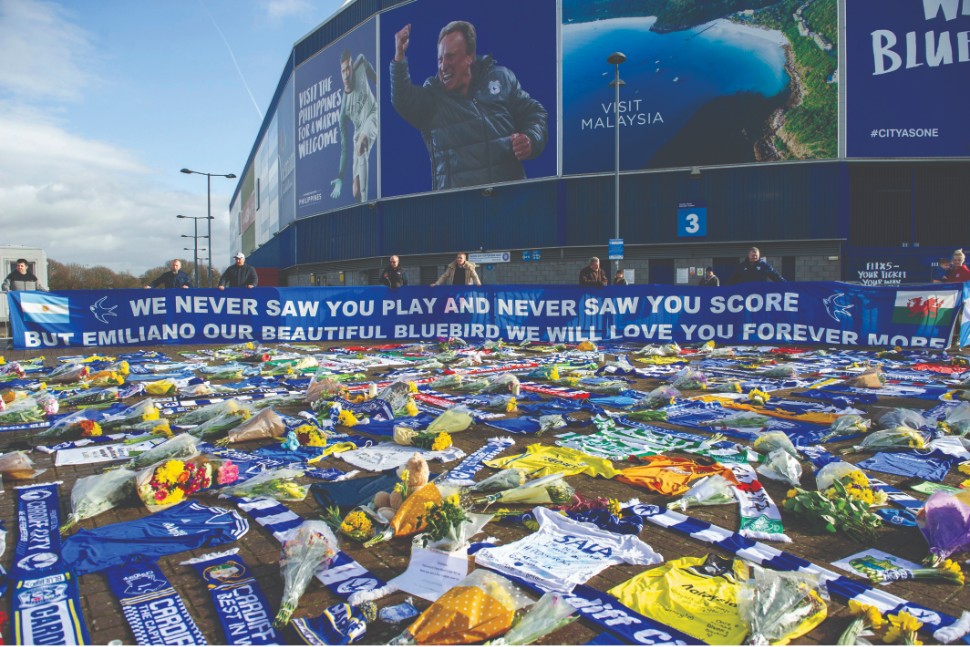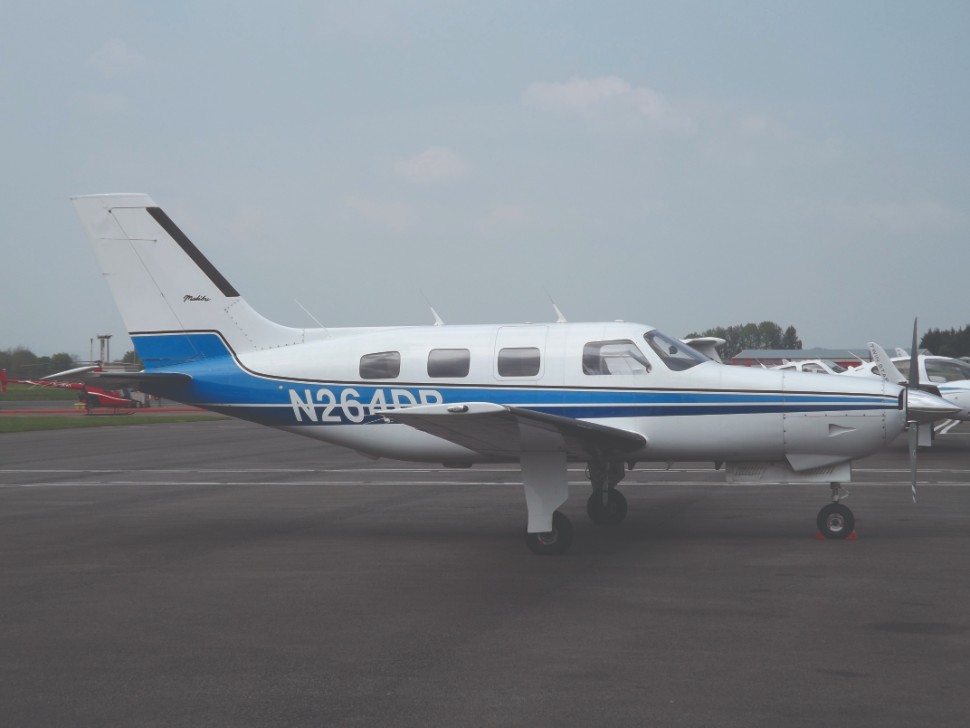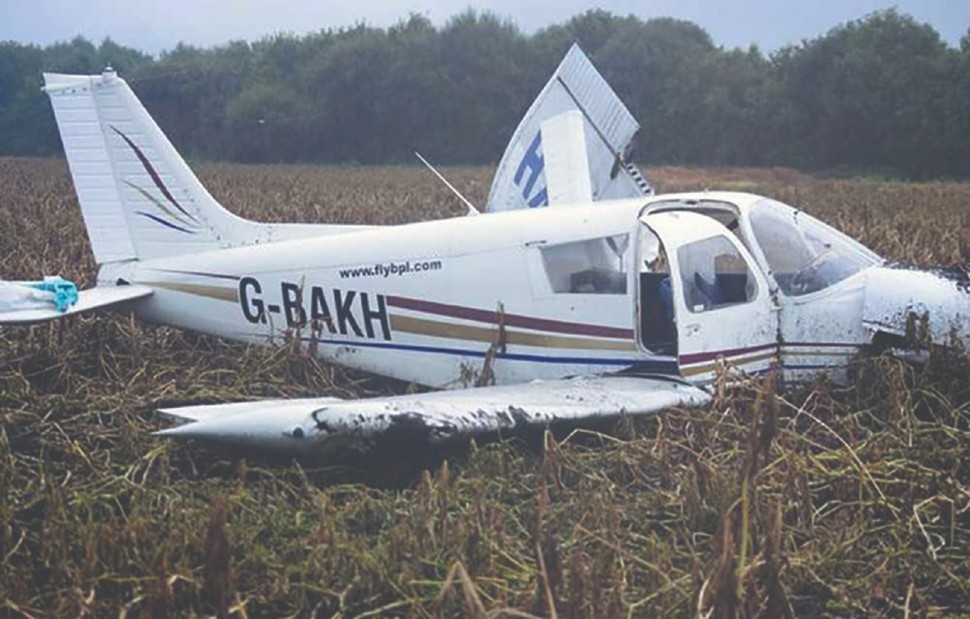The highly-publicised fatal crash on 21 January of a Piper Malibu PA-46-310P carrying Premiership footballer Emiliano Sala has put the practice of illegal or “grey” chartering – where aircraft that have not been approved for paying passengers are used for air taxi services – under the spotlight.
The tragic event has mobilised Europe’s charter industry to stamp out this widespread practice once and for all, and to promote the importance of properly regulated and safety-conscious public transport operators to the many users of private aviation.
Sala was the sole passenger of a US-registered Piper Malibu Mirage PA-46-310P (N264DB) that crashed into the sea off the coast of Guernsey in the Channel Islands, killing him and the pilot, David Ibbotson. The piston-single was en route from Sala’s former club in Nantes, France to his new home in Cardiff, Wales.
UK investigators are seeking to establish the cause of the accident, the licensing arrangements used, and the nature of the agreement that led to Ibbotson carrying out the flight – in particular whether a commercial transaction was made to transport the young footballer to his new club in the Welsh capital.
Under European regulations, if a flight is operated for hire and reward, it is classified as an air taxi service and the business must be approved by the relevant aviation authority to carry paying passengers. The aircraft must also be approved for this role and piloted by a professionally-trained crew under an air operator certificate (AOC).
Early evidence released by the UK’s Air Accidents Investigation Branch (AAIB) reveals that Ibbotson held only a private pilot’s licence, which does not allow for carrying fare-paying passengers. The AAIB is also probing whether the flight was conducted under a “cost-sharing” agreement.
The system of cost- or ride-sharing allows passengers to contribute towards the pilot's direct operating costs – such as fuel and landing fees – on a pre-determined trip advertised by the pilot. The flight cannot be made for commercial gain or for valuable consideration. Furthermore N-registered aircraft – which operate under Federal Aviation Administration regulations – cannot be used under cost-sharing rules for the purpose of merely transporting the passenger.
Dave Edwards, chief executive of charter industry body the Air Charter Association (BACA), says the Sala case raises “significant concerns”, but the doomed flight was just one of a dozen journeys made between the UK and France in the six weeks before the crash by the various parties involved in Sala’s transfer deal. “We have done our research into these flights. We've identified which aircraft they were and the routes they flew, and that gave us rise for significant concern," says Edwards. "There’s enough for us to feel that the authorities need to be looking very closely at this to make sure everyone is keeping the interests of the travelling public at the forefront of their minds."

Cardiff fans' tribute to Sala
Ashley Crowden/Athena Pictures/Shutterstock
Adam Twidell, founder and chief executive of PrivateFly, one of Europe’s largest business aircraft brokers, says sports teams are regular users of private aviation, and football transfer periods – in this case the 1-31 January window – can create a boost in demand for many brokers and operators.
Business aircraft are very effective at this time, Twidell says, as “most of the meetings [between agents, clubs and players] are scheduled at short notice, in secrecy and under tight time pressures”.
While many business aircraft flights are arranged by reputable brokers and performed by professional operators, Twidell is concerned that people from outside the aviation industry may be unaware of the regulations governing the market, and therefore inadvertently facilitate an illegal operation.
Many people, he says, have little knowledge of the dangers of booking an illegal charter, or even what an illegal charter is. The problem has been exacerbated over the past decade with the arrival of the digital charter marketplace, which has opened up the sector to a wave of new business models.
While this change has been positive for the industry and the end-user, Twidell argues it also has the downside of allowing more “bedroom brokers” to create a misleading shopfront for themselves. “It’s time for change,” says Twidell, who is also chair of the European Business Aviation Association (EBAA) charter committee.

Piper Malibu in which Sala died
JamesCC-BY-SA2.0
He is calling on his fellow brokers – who he describes as "the fundamental lifeblood of the business aviation industry" – to take action and help to stamp out bad practice. “This is a commercial pipeline that should not be held back, but must become more professional going forward. We're at a fragile stage in the business aviation growth cycle where we cannot risk customers losing confidence in us all due to the shady practices of the few.”
Brokers need to educate companies and industry sector organisations about choosing private aviation suppliers carefully, Twidell believes.
For Edwards, this “education” should also be focused on the perpetrators of illegal charter flights. ”We hope that the section of the aviation world which operates illegally takes time to reflect on why they are doing what they are doing, and to assess the risks that they are putting themselves and their passengers under,” he says.
According to a legal expert, an AOC holder takes all of the operational risk of public transport and is responsible if something goes wrong. For private owners who allow their aircraft to be used for illegal public charter, that risk and liability remains with them – and if a flight is performed illegally it could invalidate any otherwise applicable insurance coverage, including the passenger’s own life insurance.
John Hill, chief pilot and head of operations with UK helicopter operator Capital Air Services, says the consequences of an illegal charter for passengers cannot be overstated: ”There is no oversight or protection – they could be prosecuted for aiding and abetting a criminal act. Worse still they could be left with life-threatening injuries with no prospect of compensation and their next of kin could receive no payout in the event of death.”
Describing illegal charter activity as “rife”, Hill says: “It’s hard to put an exact number on it, but there are many flights taking place each day that are blatantly unlawful.”
Many people use these services out of ignorance and because they are typically cheaper than hiring a public transport operator to conduct the flight. To illustrate his point, Hill describes a recent experience when a customer openly admitted to hiring his friend’s single-engine aircraft for a trip, rather than pay a higher price for Capital’s service. “Public transport operators are more expensive because of the overheads involved in meeting the required levels of oversight, safety and security,” Hill says.
There is a huge amount of work, time and expense involved in setting up and maintaining an AOC. It is the same requirement for a simple public transport/charter operator as it is for a major airline like British Airways, says Hill, “but they have a support cast of thousands”.
The list of roles required to maintain the operation is costly and extensive. There is an accountable manager – who Hill describes as “the person responsible for everything, and the one in the dock when something goes wrong” – as well as a flight operations post holder, managers for crew training, ground operations, safety management systems, compliance, quality and continued airworthiness – along with a head of flight safety and a dangerous goods officer.
“Most of these personnel are subject to rigorous interview and ongoing scrutiny from the regulator,” says Hill. As highly-skilled individuals they also command senior management salaries.
All staff have to comply with various training programmes, including safety, quality and dangerous goods. For the pilots there is also a requirement to undergo crew resource management, first aid, fire and smoke training. Pilots must also have six-monthly simulator training, even those in part-time roles. Annual audits are also mandatory, including for third-party service providers to ensure they meet the same standards.
“The illegal charter market does none of the above. They’ll buy a worn-out Seneca, take a handful of grubby twenties and just go,” says Hill.
These measures are designed to ensure the safety of the paying/travelling public and those on the ground, he adds. They also enable AOC operators to account for their actions and standards of planning, training and maintenance. “All this comes at a cost, not shared by the illegal charter market. These are the people who are cutting the throats of the AOC holders,” says Hill.
He singles out the cost-sharing market for scrutiny. While this practice was established to allow private pilots to build up their hours by sharing the costs of the flight down the middle with travellers heading to same destination, Hill argues that it is increasingly being used as illegal charter through the back door. “It has become so relaxed to the point where it is nearly impossible to prove a criminal act,” he says.
BACA’s Edwards agrees. The fierce competition for business across Europe’s charter market is squeezing the already very narrow profit margins of public transport operators, he says, many of whom are struggling to make ends meet.
The price paid for a charter flight is usually a “direct profit to the illegal charterers”, says Edwards, who is also a director of UK management and charter company Synergy Aviation. But for regulated providers the fee goes towards the overhead costs of safety, security, training and compliance specialists – directly and invisibly looking after passenger safety in the background. “It’s not cheaper, it’s just cutting something incredibly vital out of the process of making you safe,” he says.

Murgatroyd PA28 crash, Manchester, Sept 2017
Greater Manchester Police
Edwards believes the responsibility for illegal charter activity ultimately lies with the flight crew. “It’s within the control of the pilots operating these flights to stop it from happening and stop the belief that they are either above the law, or are invincible,” he says.
If they don’t then the industry must to continue to push the authorities to stop it from happening. Unfortunately, industry’s attempts to stamp out illegal charter over the years have been largely ineffective. Edwards points to only one prosecution in the UK “in recent history” that has resulted in a prison sentence.
This guilty party in that case was Robert Murgatroyd, the pilot of PA28 Cherokee who was detained in March for three years and six months for carrying out an illegal charter flight in September 2017. Despite only holding a PPL, Murgatroyd charged his three passengers £500 ($580) each for a birdwatching trip, from Manchester to the Isle of Barra in Scotland. The piston-single was 193kg (426lb) over the aircraft’s maximum take-off weight of 975kg and crashed into a field soon after take off. Nobody was seriously injured. Murgatroyd was convicted on seven charges including recklessly endangering the safety of an aircraft or persons in an aircraft, conducting a public transport flight without an AOC and acting as a pilot without holding an appropriate licence.
Edwards describes successful prosecutions as a “rarity”, especially in the UK, where the penalty for illegal charter is generally a fine of around £500.
A lack of enforcement by national regulators such as the UK Civil Aviation Authority is helping to perpetuate the problem. “We need to see more policing, more successful convictions and stronger penalties, including removals of licences, impounding of aircraft and custodial sentences,” says Edwards. “Only by implementing punishments that really hurt these perpetrators will the practice finally be wiped out”.
For its part the CAA says it takes illegal public transport flying “extremely seriously”. It calls the practice “a clear safety risk” to unsuspecting passengers and says it undermines the livelihood of safety-conscious, law-abiding operators. “We will continue to investigate and prosecute individuals engaged in illegal public transport flights and will always push for the strongest possible sentences,” it says.
The agency urges anyone “thinking about paying for a flight in a light aircraft” to check that the individual or company conducting the flight has an AOC.
The publicity generated from the Sala tragedy has already helped to raise awareness of charter operations, Edwards says. “We are being asked questions by travellers about how they can protect themselves and ensure the aircraft they travel on is safe and legal. We hope that as the investigation into the accident continues, traveller safety remains the most important focus.”
BACA has joined forces with the EBAA to help bring perpetrators of illegal charter activity to book. The trade bodies are gathering data, via a joint reporting mechanism with their members, in an attempt to collect evidence about the practice, where it is most prevalent, and who the frequent offenders are. “It’s a whistle-blower website with anonymous reporting,” says Edwards. “If you think something dodgy is going on, report it..”
BACA is also planning to launch an education campaign to highlight the dangers of illegal charter. “We need to reach as many people so we will put posters up in-flight schools to alert pilots and in VIP terminals to reach the passengers. We will keep petitioning and keep the story going.”
The industry is also seeking to level the playing field between commercial and private operations, and has secured European Union Aviation Safety Agency (EASA) approval to amend two key areas of regulation that it believes drives grey charter: first, allowing AOC holders to use the same runway performance data as their private counterparts, which will open up more airports to the carriers – and second, adjusting crew flight time limitation rules to better reflect the structure of operations by AOC-holder companies.
Marc Bailey, chief executive of the British Business and General Aviation Association, explains that under an AOC, the FTL rules are close to those for a scheduled airline, “even though the operations are not remotely comparable”.
While under private operations there are no limitations to crew flight times, “If you compare the nature of the two operations under an AOC, or a corporate operation with a flight department, they have the backing of an operations and management structure to support decision making, significantly reducing risk,” says Bailey. Under simple private operations there are far fewer checks and balances, often leaving the decision in the hands of the crew on site, he adds.
These changes are expected to be incorporated in around 18 months.
Whilst commercial operators are keen to see the playing field levelled, Edwards says the priority for the industry is protecting the travelling public from illegal suppliers: “Risking lives and safety for the sake of a few hundred pounds is incredibly short-sighted,” he says.

Martin Moxter/imageBROKER/Shutterstock
2019EBACE
Source: Flight International






















